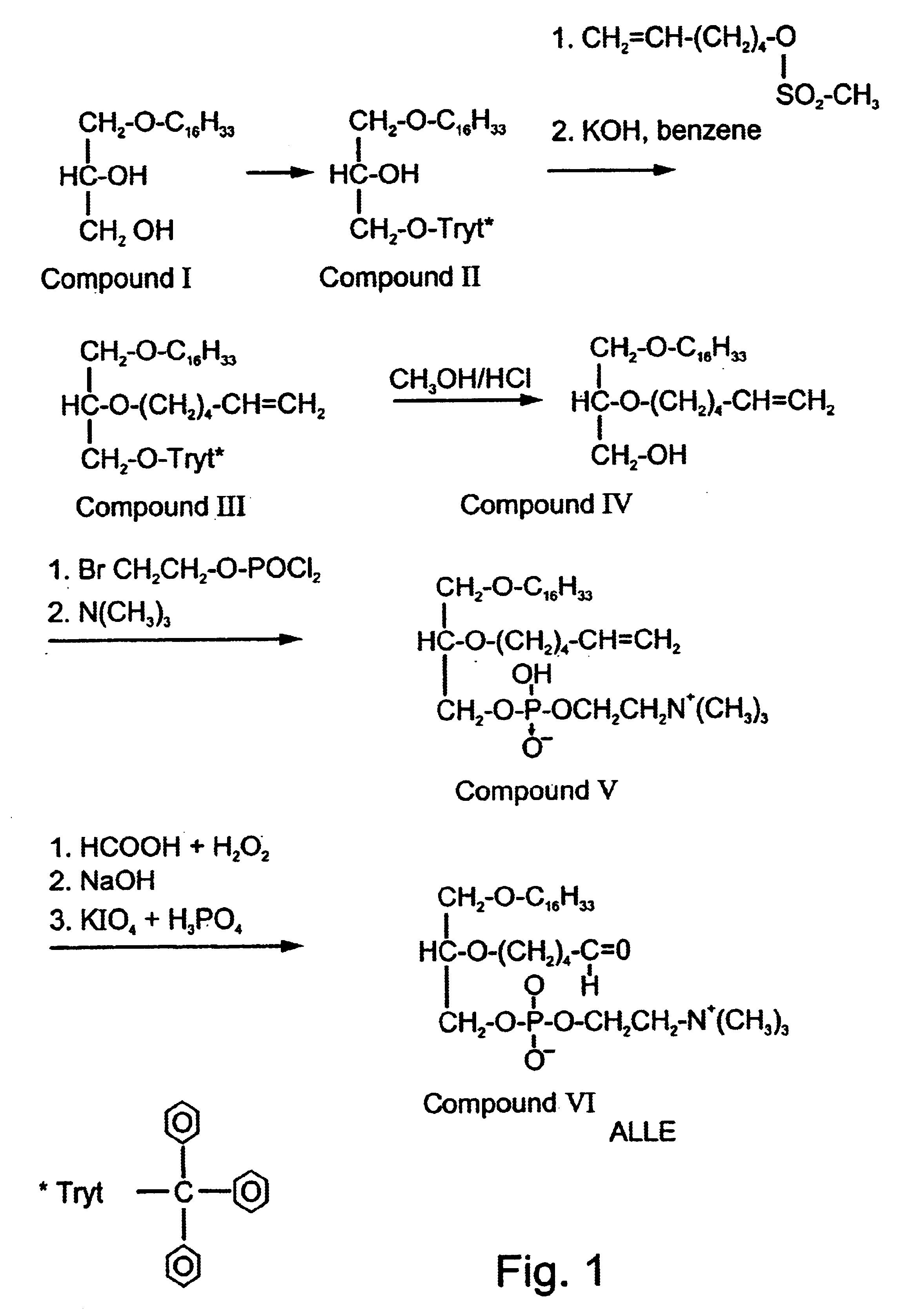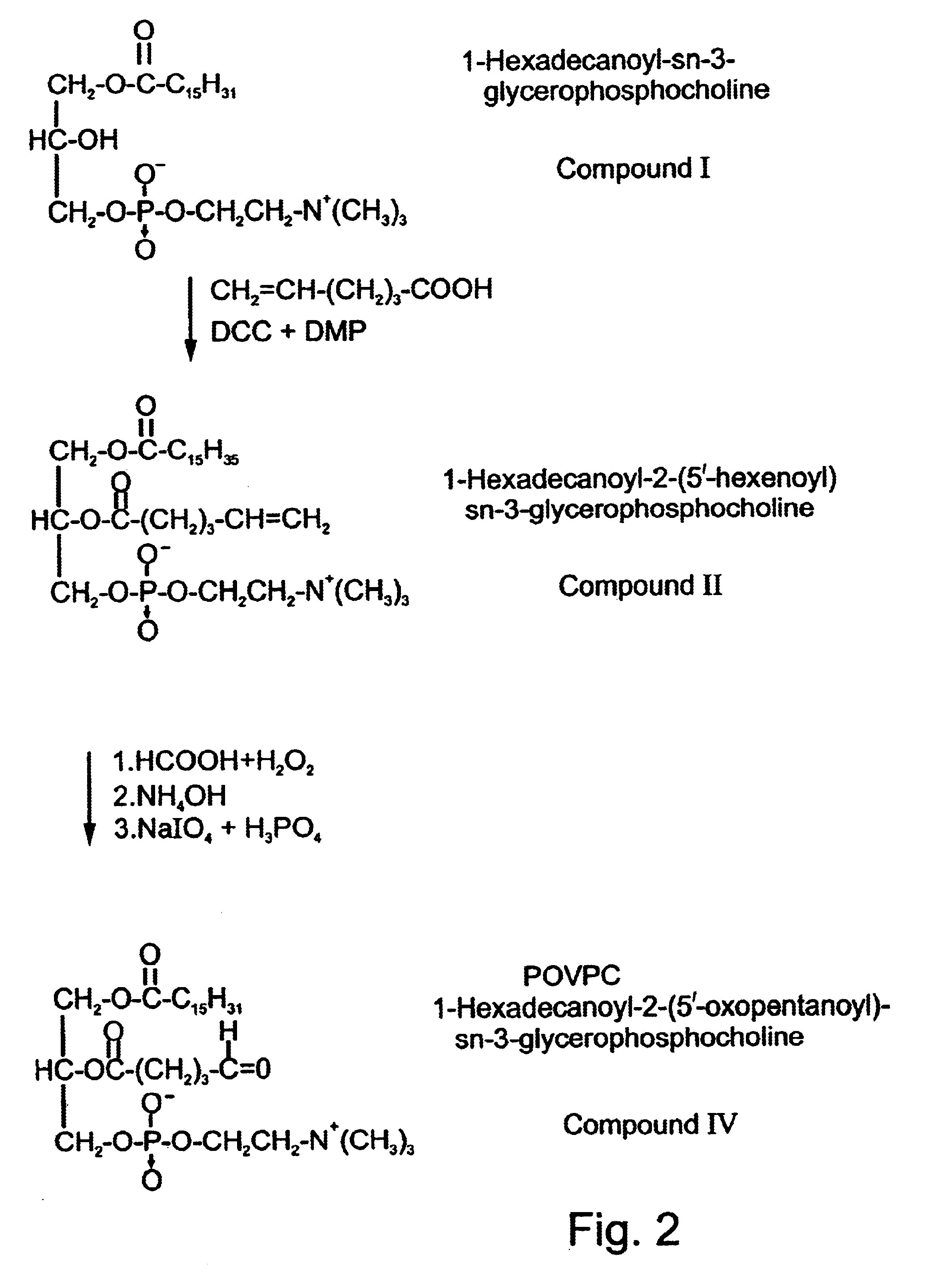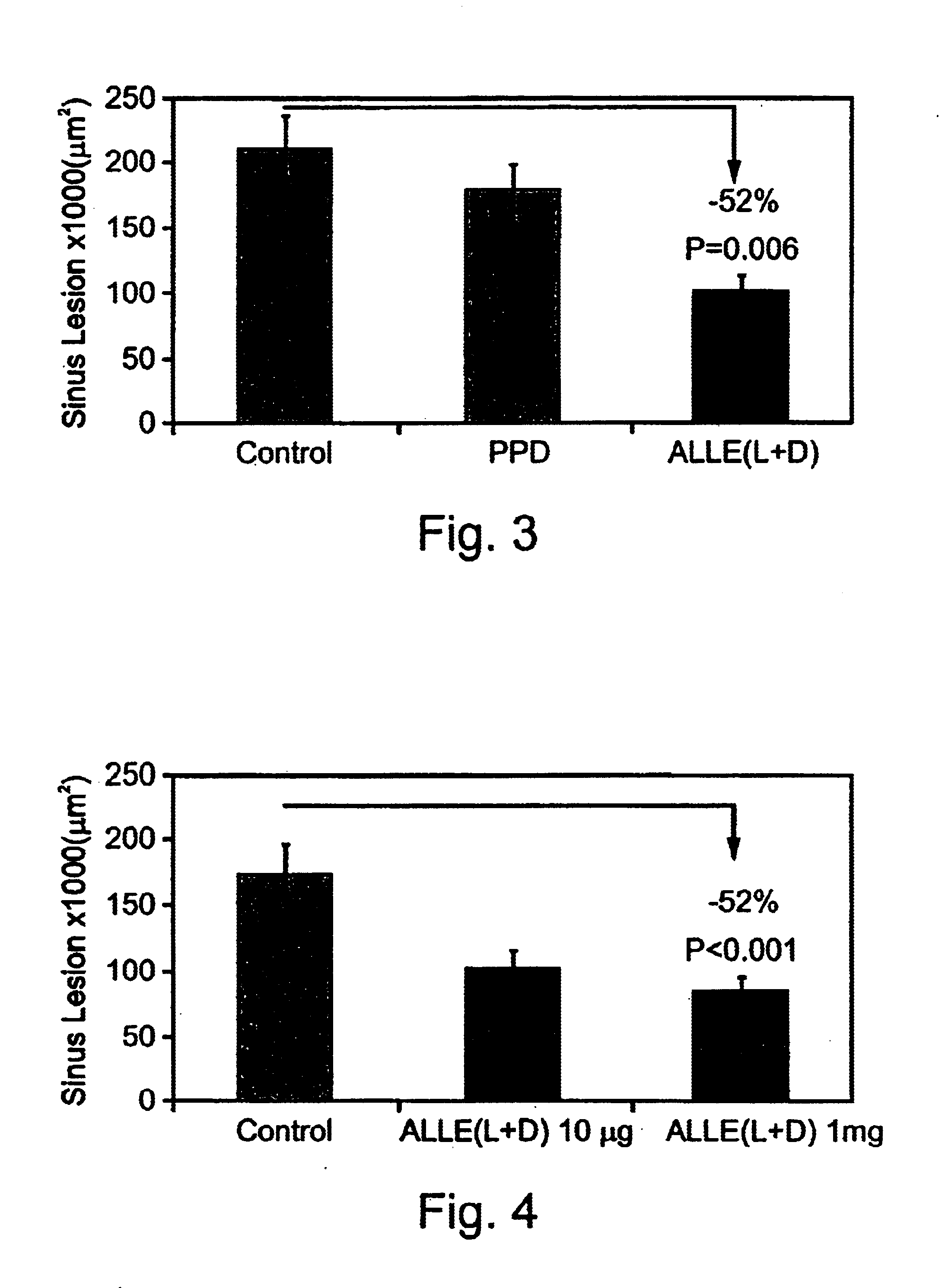Methods employing and compositions containing defined oxidized phospholipids for prevention and treatment of atherosclerosis
a technology of oxidized phospholipids and compositions, applied in the direction of antibacterial agents, antimycotics, antivirals, etc., can solve the problems of severe pain, lack of oxygen supply in tissues, and major health risks of cardiovascular diseases
- Summary
- Abstract
- Description
- Claims
- Application Information
AI Technical Summary
Benefits of technology
Problems solved by technology
Method used
Image
Examples
examples
Reference is now made to the following examples, which together with the above descriptions, illustrate the invention in a non limiting fashion.
Generally, the nomenclature used herein and the laboratory procedures utilized in the present invention include biochemical and immunological techniques. Such techniques are thoroughly explained in the literature. See, for example, “Cell Biology: A Laboratory Handbook”, Volumes I-III Cellis, J. E., ed. (1994); “Current Protocols in Immunology” Volumes I-III Coligan J. E., ed. (1994); Stites et al. (eds), “Basic and Clinical Immunology” (8th Edition), Appleton & Lange, Norwalk, Conn. (1994); Mishell and Shiigi (eds), “Selected Methods in Cellular Immunology”, W.H. Freeman and Co., New York (1980); available immunoassays are extensively described in the patent and scientific literature, see, for example, U.S. Pat. Nos. 3,791,932; 3,839,153; 3,850,752; 3,850,578; 3,853,987; 3,867,517; 3,879,262; 3,901,654; 3,935,074; 3,984,533; 3,996,345; 4,034...
example i
Synthesis of the Tolerizing / Immunizing Antigens 2,5′-Aldehyde Lecithin Ether (ALLE) and POVPC
1-hexadecyl-2-(5′-oxo-pentanyl)-sn-glycero-3-phosphocholine
1-hexadecanoyl-2-(5′-oxo-pentanoyl)-sn-3-phosphocholine
Synthesis of 2,5′-Aldehyde Lechitin Ether (ALLE):
2,5′-Aldehyde Lecithin Ether (ALLE) was synthesized according to a modification of general methods for synthesis of ether analogs of lecithins communicated by Eibl H., et al. Ann. Chem. 709:226-230, (1967), W. J. Baumann and H. K. Mangold, J. Org. Chem. 31,498 (1996), E. Baer and Buchnea J B C. 230,447 (1958), Halperin G et al Methods in Enzymology 129,838-846 (1986). The following protocol refers to compounds and processes depicted in 2-D form in FIG. 1.
Hexadecyl-glycerol ether: D-Acetone glycerol (4 grams) for synthesis of L-ALLE or L-Acetone glycerol for synthesis of D-ALLE, powdered potassium hydroxide (approximately 10 grams) and hexadecyl bromide (9.3 grams) in benzene (100 ml) were stirred and refluxed for 5 hours, while r...
example ii
Immunization Against L-ALLE+D-ALLE Specifically Inhibits Atherogenesis in Genetically Disposed (ApoE-Knock Out) Mice
The present inventors have demonstrated that immunization with the stable, etherified synthetic LDL component ALLE can reduce the extent of atherosclerotic plaque formation in susceptible mice. 19 female 5-7 weeks old Apo E / C 57 mice were divided into 3 groups. In group A (n=6) the mice were immunized intreperitoneally, as described in Materials and Methods section above, with 150 μg / mouse L-ALLE+D-ALLE once every 2 weeks (0.3 ml / mouse) X4. In group B (n=6) the mice were immunized with tuberculin toxin Purified Protein Derivative (PPD) once every 2 weeks (0.3 ml / mouse). In group C (n=7) the mice received no immunization. Mice from all three groups were bled prior to immunization (Time 0), and at one week after the second immunization for determination of anti-ox LDL antibodies, anti-ALLE antibodies and lipid profile. Atherosclerosis assessment was performed as describe...
PUM
| Property | Measurement | Unit |
|---|---|---|
| pharmaceutical composition | aaaaa | aaaaa |
| shear stresses | aaaaa | aaaaa |
| density | aaaaa | aaaaa |
Abstract
Description
Claims
Application Information
 Login to View More
Login to View More - R&D
- Intellectual Property
- Life Sciences
- Materials
- Tech Scout
- Unparalleled Data Quality
- Higher Quality Content
- 60% Fewer Hallucinations
Browse by: Latest US Patents, China's latest patents, Technical Efficacy Thesaurus, Application Domain, Technology Topic, Popular Technical Reports.
© 2025 PatSnap. All rights reserved.Legal|Privacy policy|Modern Slavery Act Transparency Statement|Sitemap|About US| Contact US: help@patsnap.com



